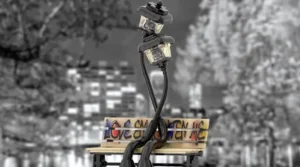
In the vast universe of Pokémon collectibles, where rare trading cards, figurines, and limited-edition merchandise fetch astronomical prices, a new contender has entered the scene—an oddly shaped Cheeto. Recently, an auction stunned both the Pokémon and snack-loving communities when a Cheeto resembling Charizard, one of the franchise’s most beloved fire-type Pokémon, sold for an eye-watering $87,840.
The peculiar yet lucrative sale highlights the bizarre world of collectible food items, where snack aficionados, pop culture enthusiasts, and opportunistic investors collide. But how did a simple cheese-dusted puff of corn reach such legendary status? And why do people pay enormous sums for items that, quite literally, could crumble in an instant?
A Cheeto, But Make It Charizard
The fateful Cheeto was discovered by a snack enthusiast who had been indulging in a bag of Flamin’ Hot Cheetos when they noticed something unusual. Unlike the standard random curls and twists of the snack, this particular piece bore an uncanny resemblance to Charizard, the dragon-like final evolution of Charmander. With its wings spread, a defined snout, and even what appeared to be a tail flame, the snack seemed like it had been sculpted by fate itself.
Recognizing its potential, the owner decided to list the Cheeto on an online auction platform, a move that would ultimately prove to be incredibly profitable. Starting with a modest listing price, the bid quickly gained traction among Pokémon collectors, meme enthusiasts, and speculative investors. The auction escalated rapidly, culminating in a winning bid of $87,840.
The Culture of Collectible Snacks
While it might seem absurd to spend nearly $90,000 on a single Cheeto, this isn’t the first time a snack has made headlines for its shape. Over the years, strangely shaped food items have been sold for jaw-dropping prices, often due to their resemblance to celebrities, animals, or pop culture icons.
For instance, a Cheeto shaped like Harambe, the gorilla who became an internet sensation, sold for over $99,000 in 2017. Similarly, a McDonald’s Chicken McNugget that resembled a character from Among Us sold for nearly $100,000. These cases highlight a niche but highly profitable market where rare or oddly shaped food items become coveted collectibles.
What makes these items so valuable? The answer lies in a combination of factors, including rarity, nostalgia, internet virality, and the sheer novelty of owning something so unique.
The Power of Pokémon Nostalgia
One of the biggest driving forces behind the Charizard Cheeto’s staggering price is the sheer influence of Pokémon as a global phenomenon. Since its debut in 1996, Pokémon has become one of the most successful franchises in entertainment history, spanning video games, trading cards, animated series, and movies.
Charizard, in particular, holds a special place in fans’ hearts. As one of the original 151 Pokémon, its fiery presence in early video games and the trading card game made it a fan favorite. The Pokémon Trading Card Game’s Charizard card remains one of the most valuable collectibles, with some rare editions selling for hundreds of thousands of dollars.
With this deep-seated nostalgia and collectors’ obsession, anything remotely linked to Charizard—no matter how unconventional—has the potential to attract high-value bids.
Internet Virality and the Meme Economy
The rapid rise of internet culture has played a major role in the skyrocketing value of bizarre items like the Charizard Cheeto. The moment the auction was listed, the internet caught wind of it, and social media exploded with discussions, memes, and debates.
Platforms like Reddit, Twitter, and TikTok fueled the Cheeto’s popularity, turning it from an odd snack discovery into a viral sensation. In today’s meme-driven economy, internet attention directly influences market value. When something becomes widely shared, it increases its perceived worth, drawing in potential buyers willing to spend big for a piece of internet history.
This isn’t the first time meme culture has driven sales. From the NFT craze to the resale market of viral products like the Popeyes chicken sandwich, internet virality has proven time and again that it can turn almost anything into a commodity.
Who Buys These Items?
The biggest question surrounding these high-priced snack sales is: Who actually buys them? While some might assume it’s simply a joke, the truth is more complicated.
Buyers in this market often fall into three main categories:
Serious Collectors – There are collectors who seek out rare, one-of-a-kind items to add to their private collections, much like art enthusiasts buy rare paintings. These individuals view their purchases as investments, believing that their value may appreciate over time.
Pop Culture Investors – Some buyers see these items as assets that could increase in value due to their connection to a cultural moment. Much like cryptocurrency or NFTs, these purchases are speculative and risky, but the potential for massive returns exists.
Companies or Influencers – Some businesses or influencers buy these items to generate publicity. A company might purchase the Charizard Cheeto to display in a promotional campaign, while an influencer might buy it as part of a viral stunt.
Regardless of who buys them, these unique purchases often remain conversation pieces, further fueling their legendary status.
The Risks of Collecting Perishable Items
Unlike traditional collectibles such as trading cards, coins, or artwork, perishable food items present a unique challenge—decomposition. No matter how much care is taken, a Cheeto or a chicken nugget will not last forever.
To combat this, buyers often use preservation methods such as vacuum-sealing the item, storing it in airtight glass cases, or even using freeze-drying techniques. Some collectors go as far as to coat their items in resin to create a permanent display piece.
However, despite these efforts, there is always the risk that time, exposure, or accidents could ruin the collectible. This makes the market for snack-related items highly volatile and risky compared to other forms of collecting.
Impression
The sale of the Charizard Cheeto for $87,840 is a testament to the strange and unpredictable nature of internet culture, nostalgia-driven collecting, and meme economics. What started as a random snack discovery turned into a pop culture phenomenon, proving that even the most unexpected items can command astonishing prices in the right market.
No comments yet.








